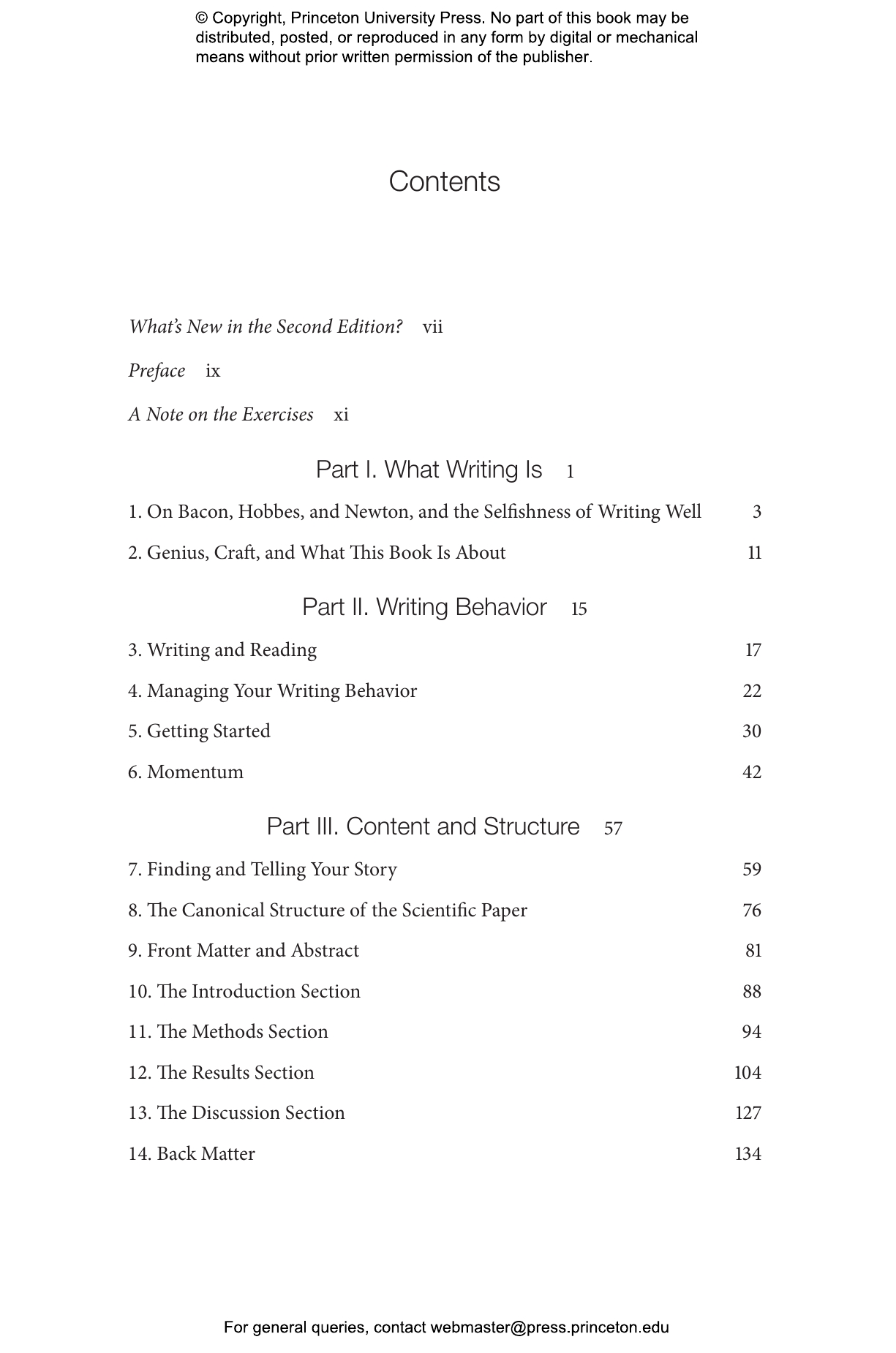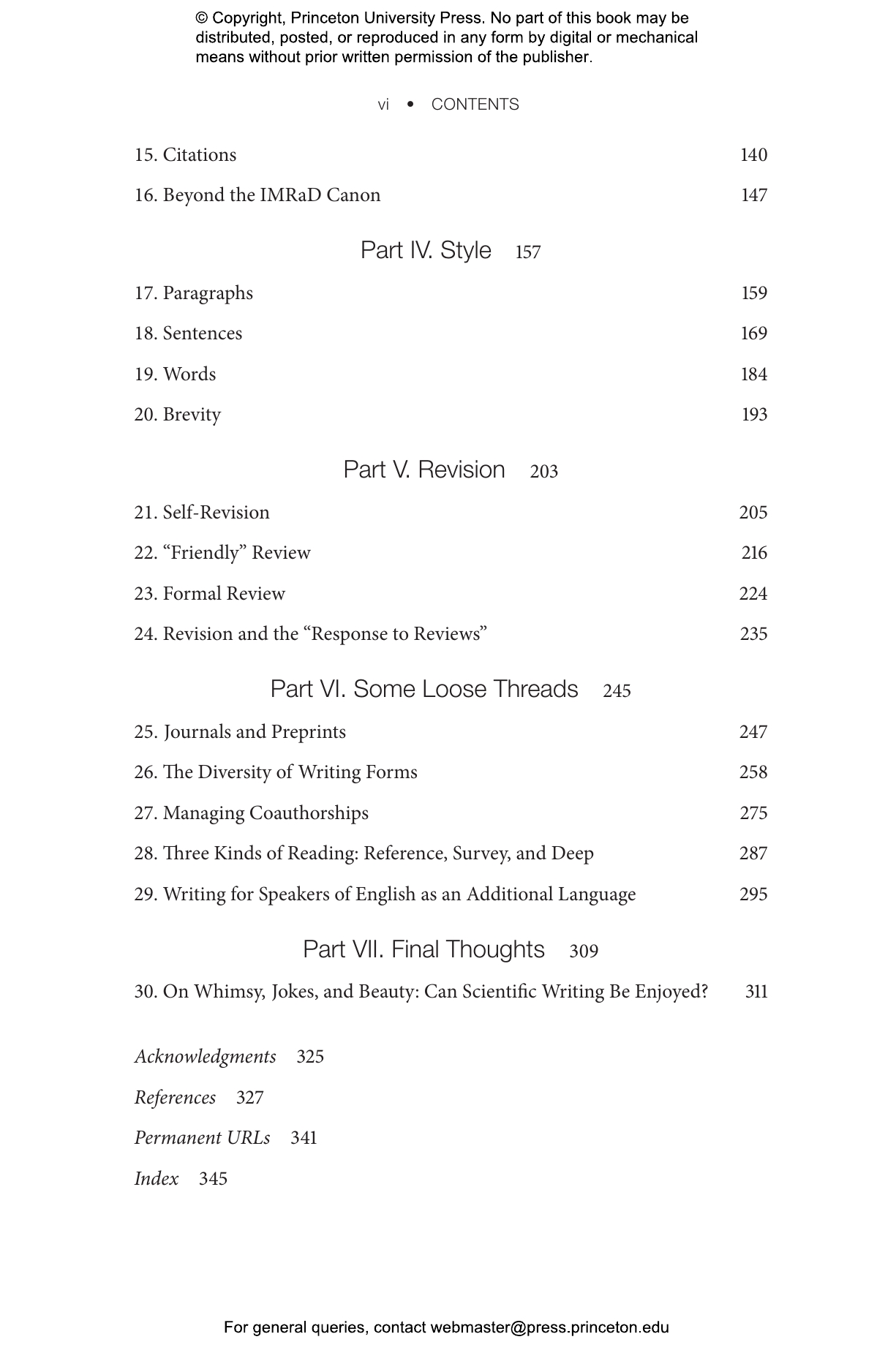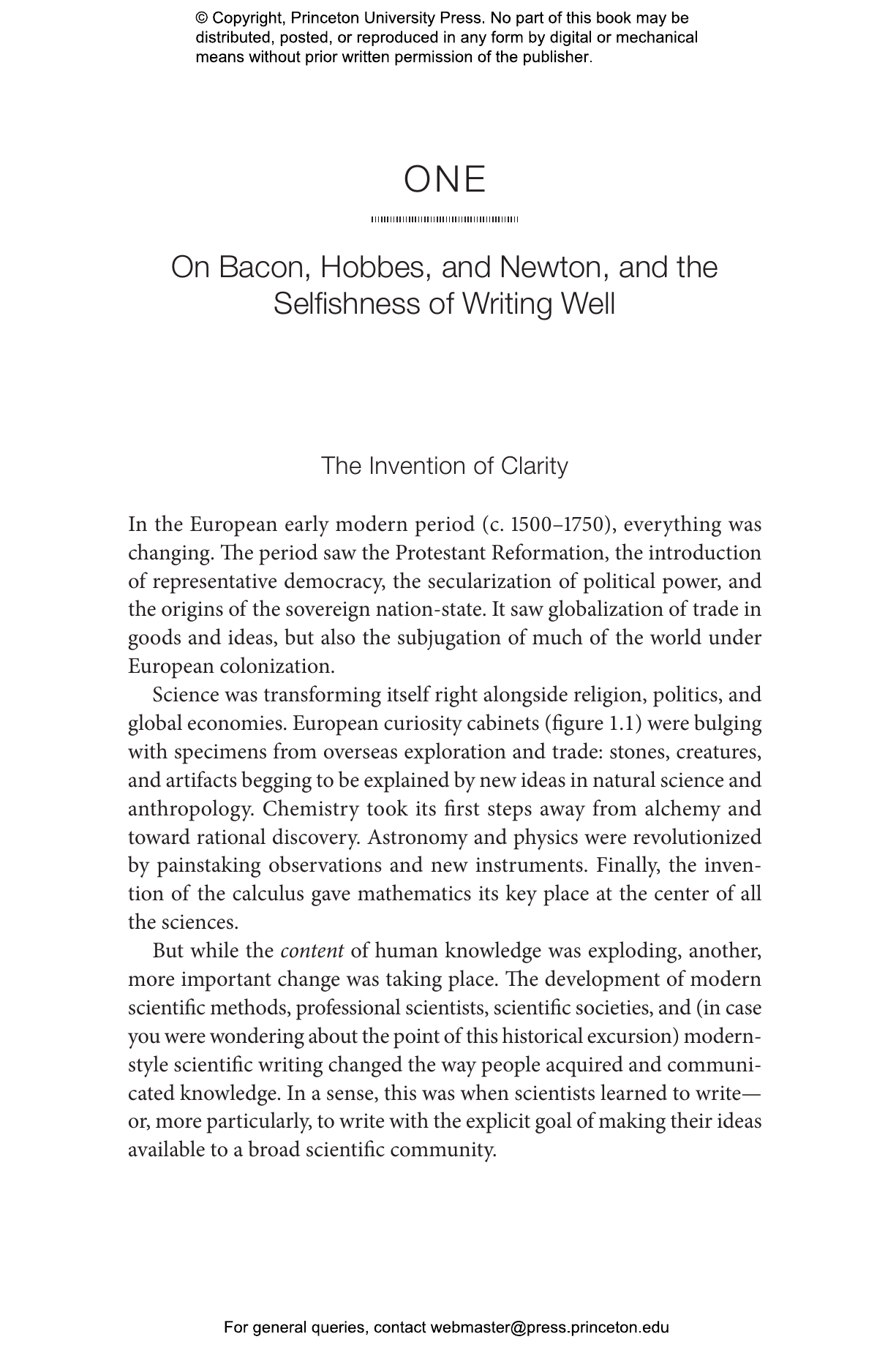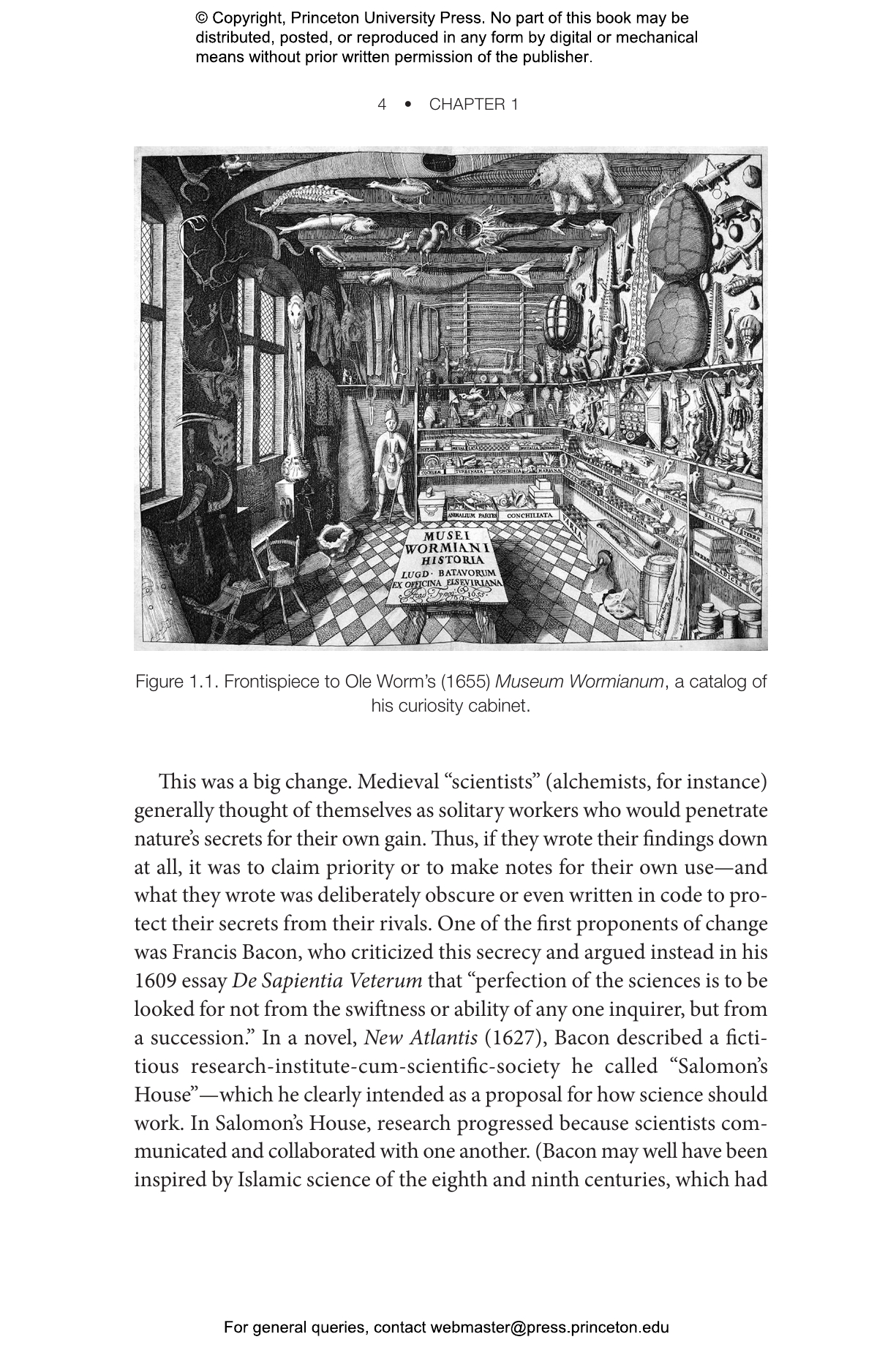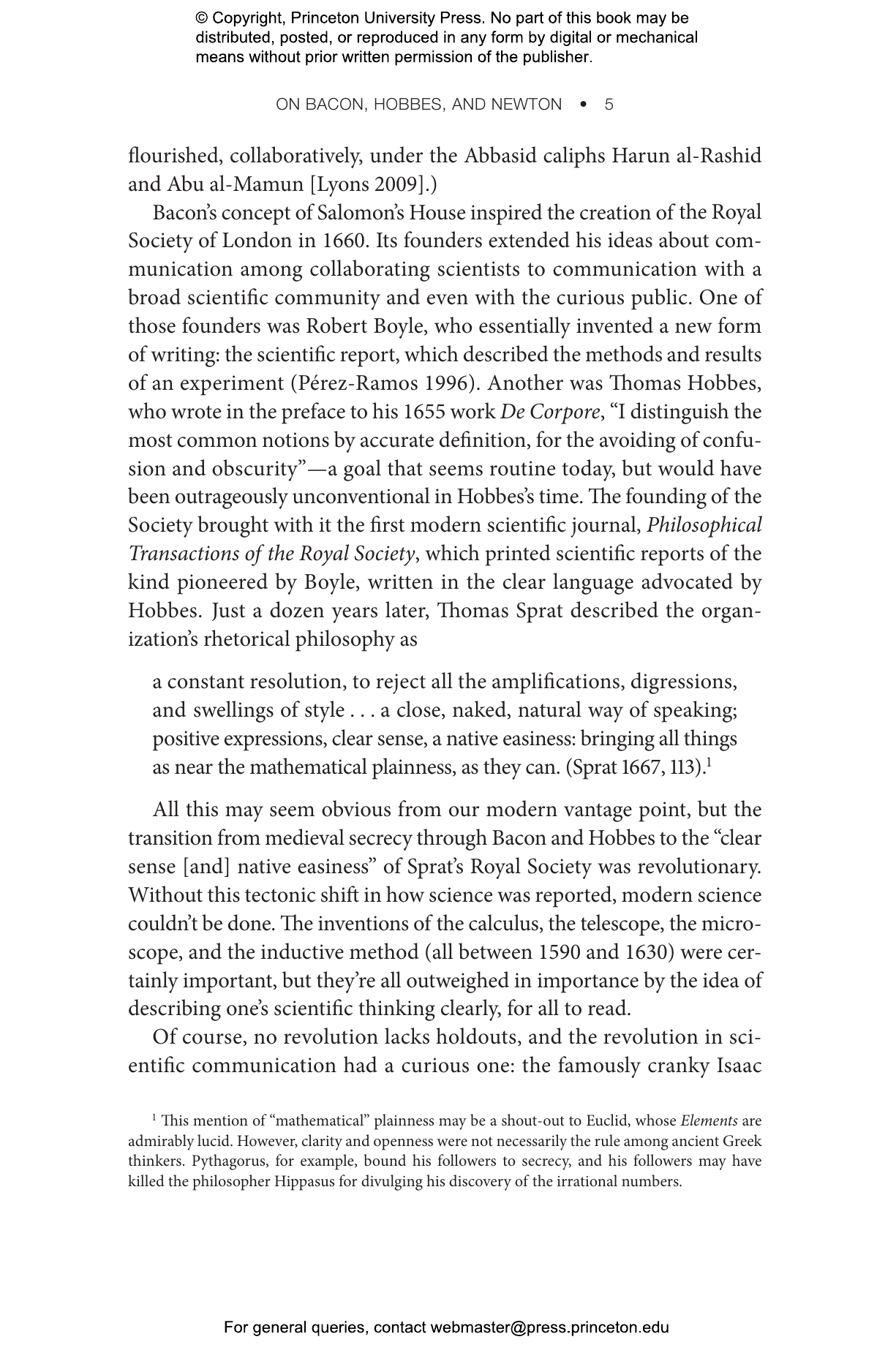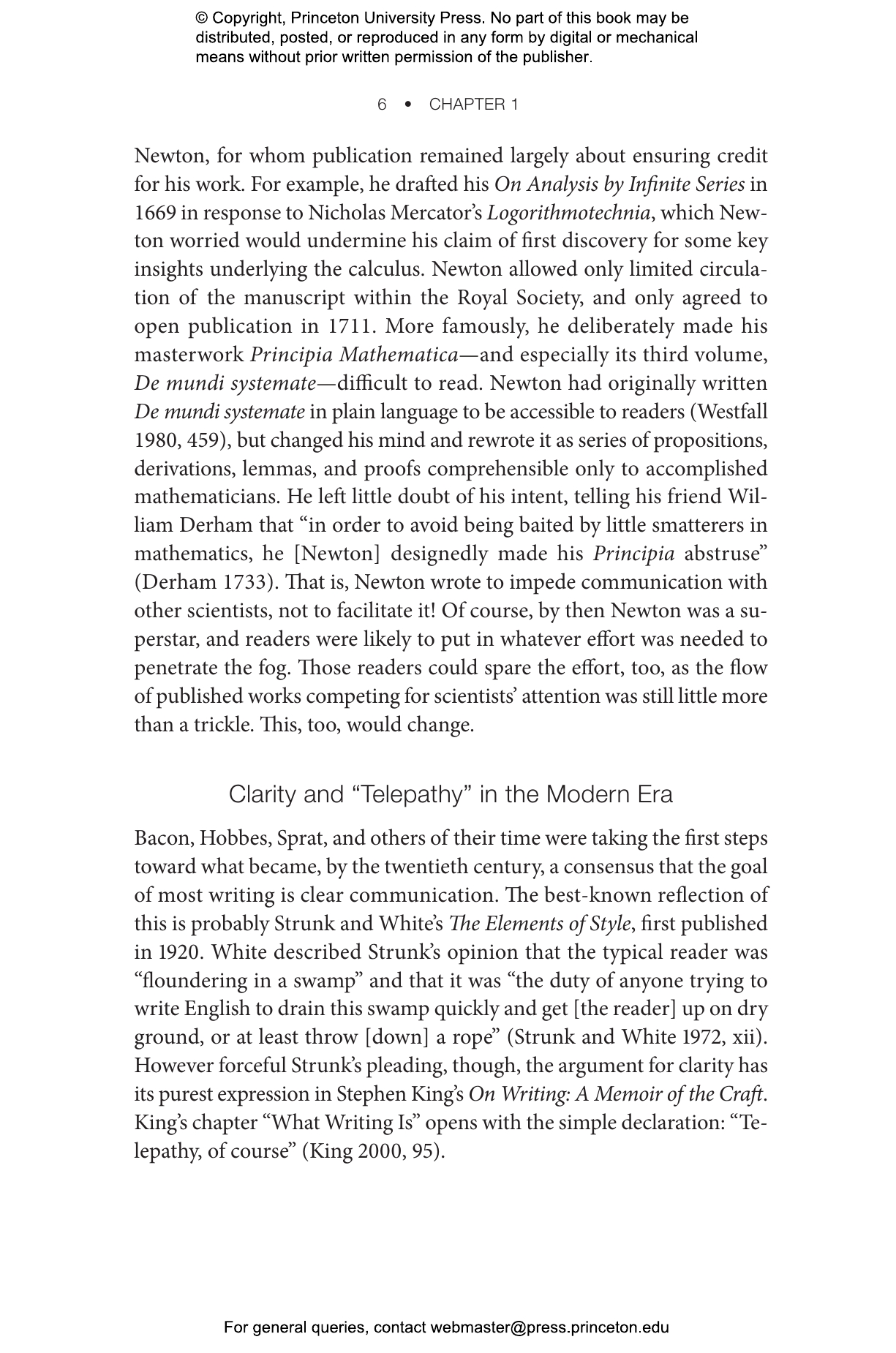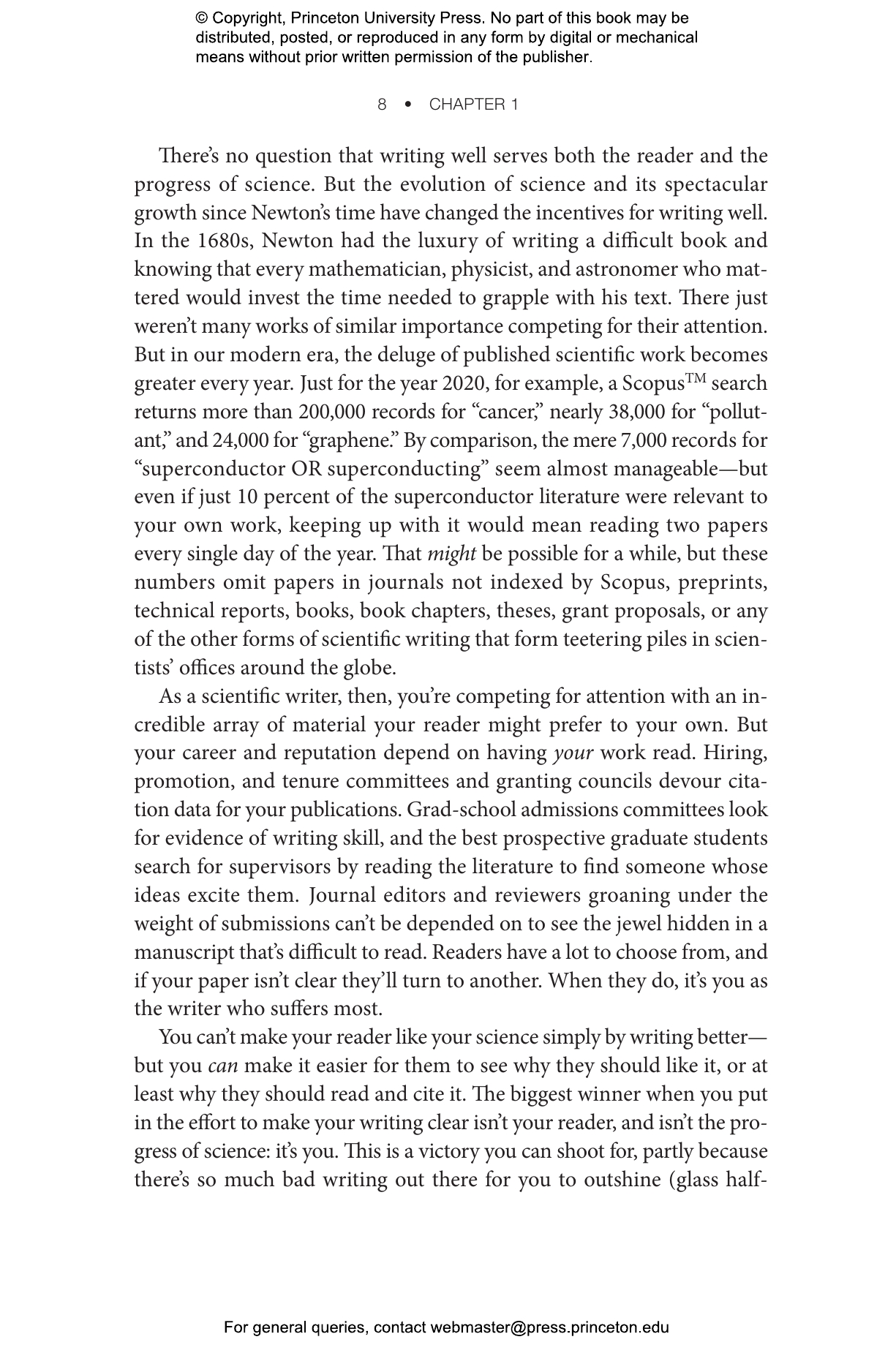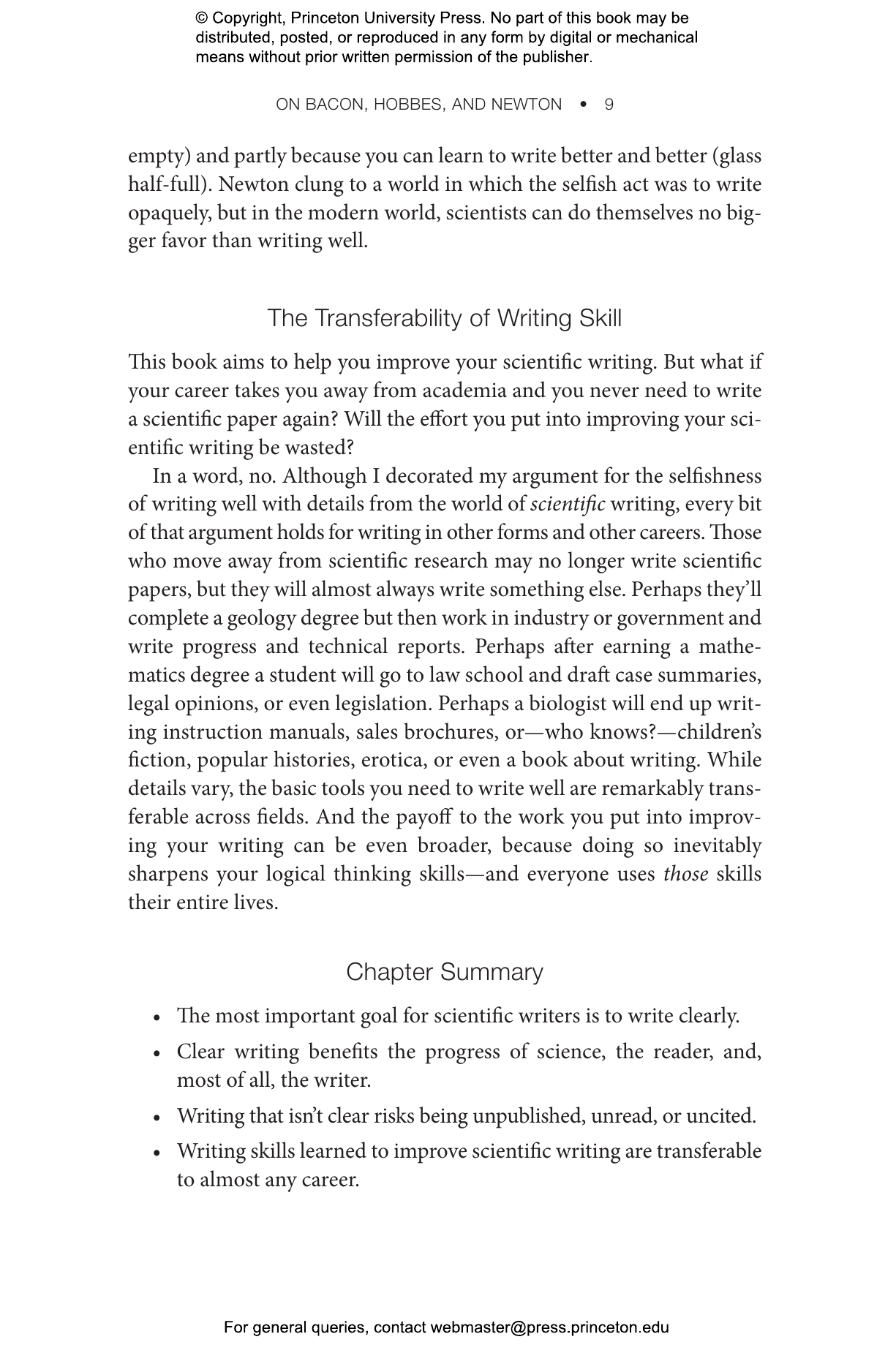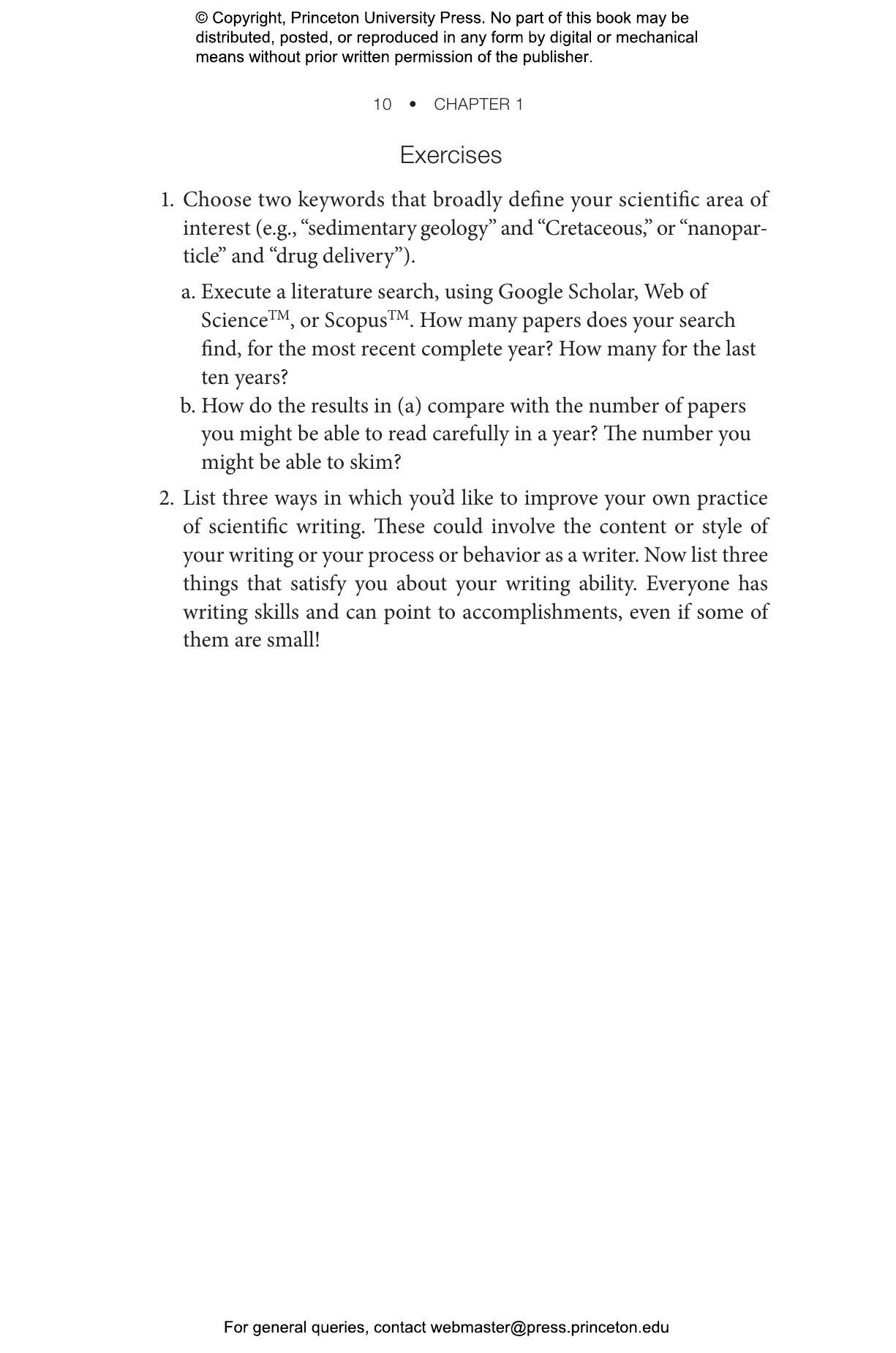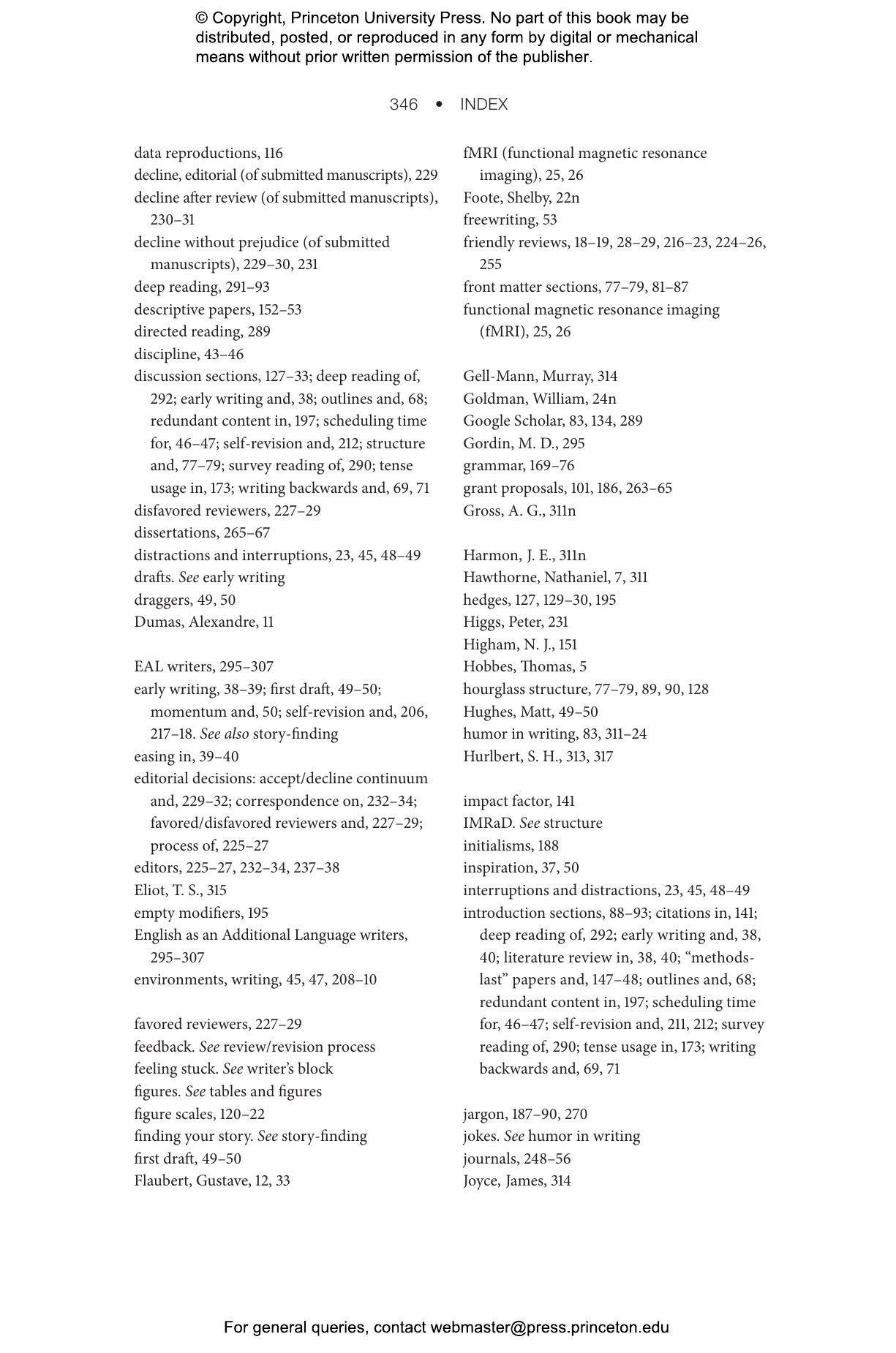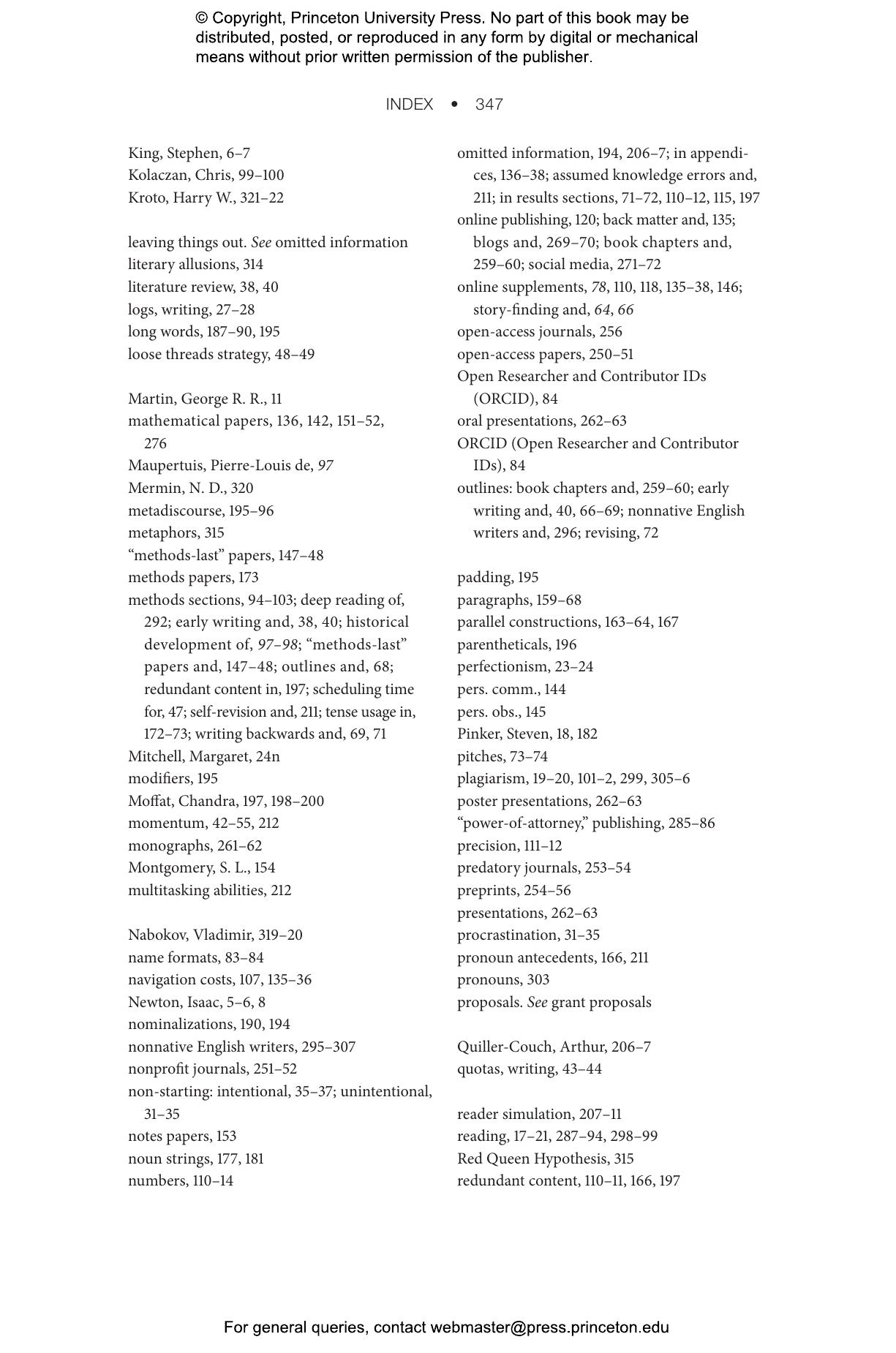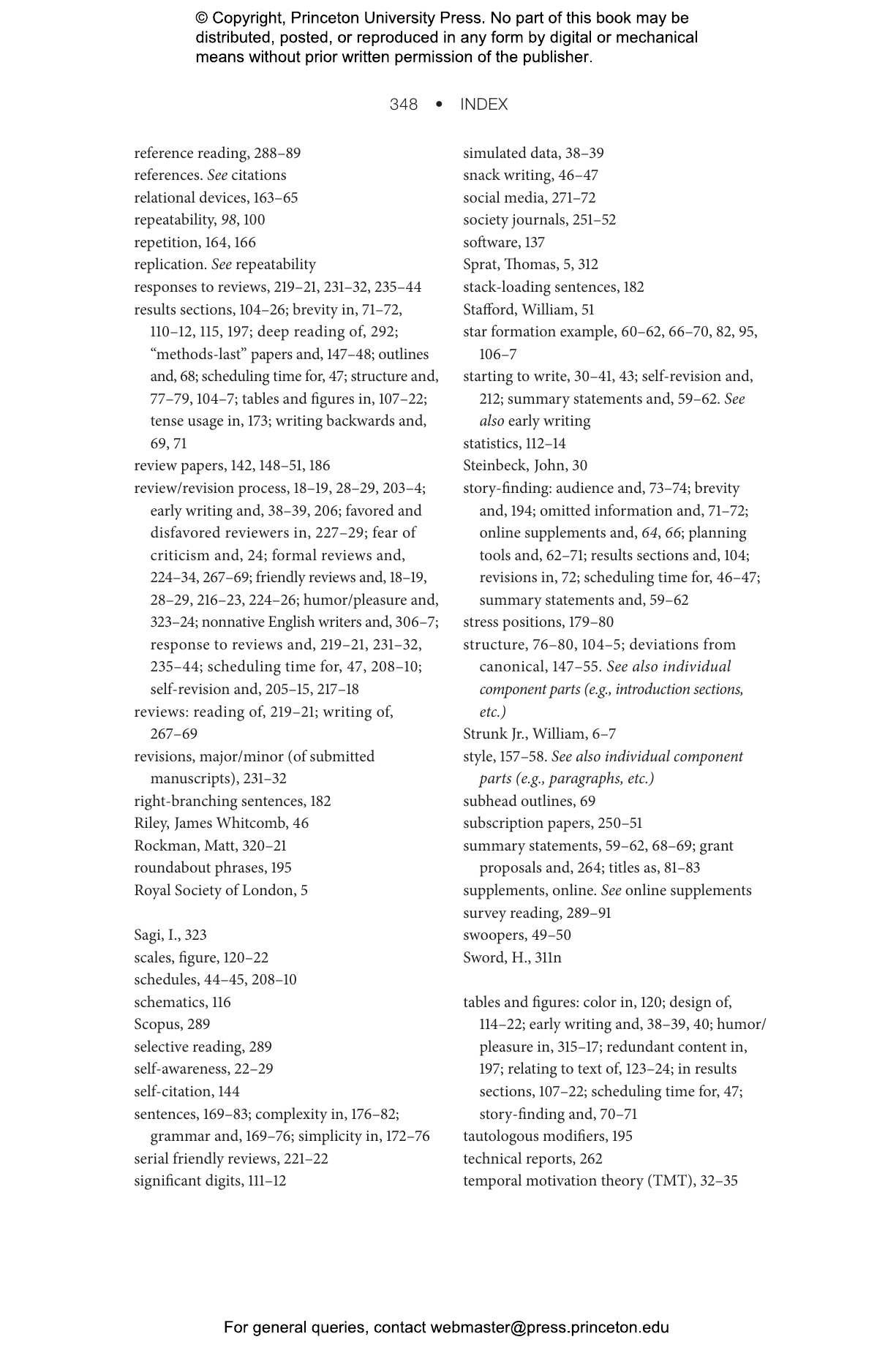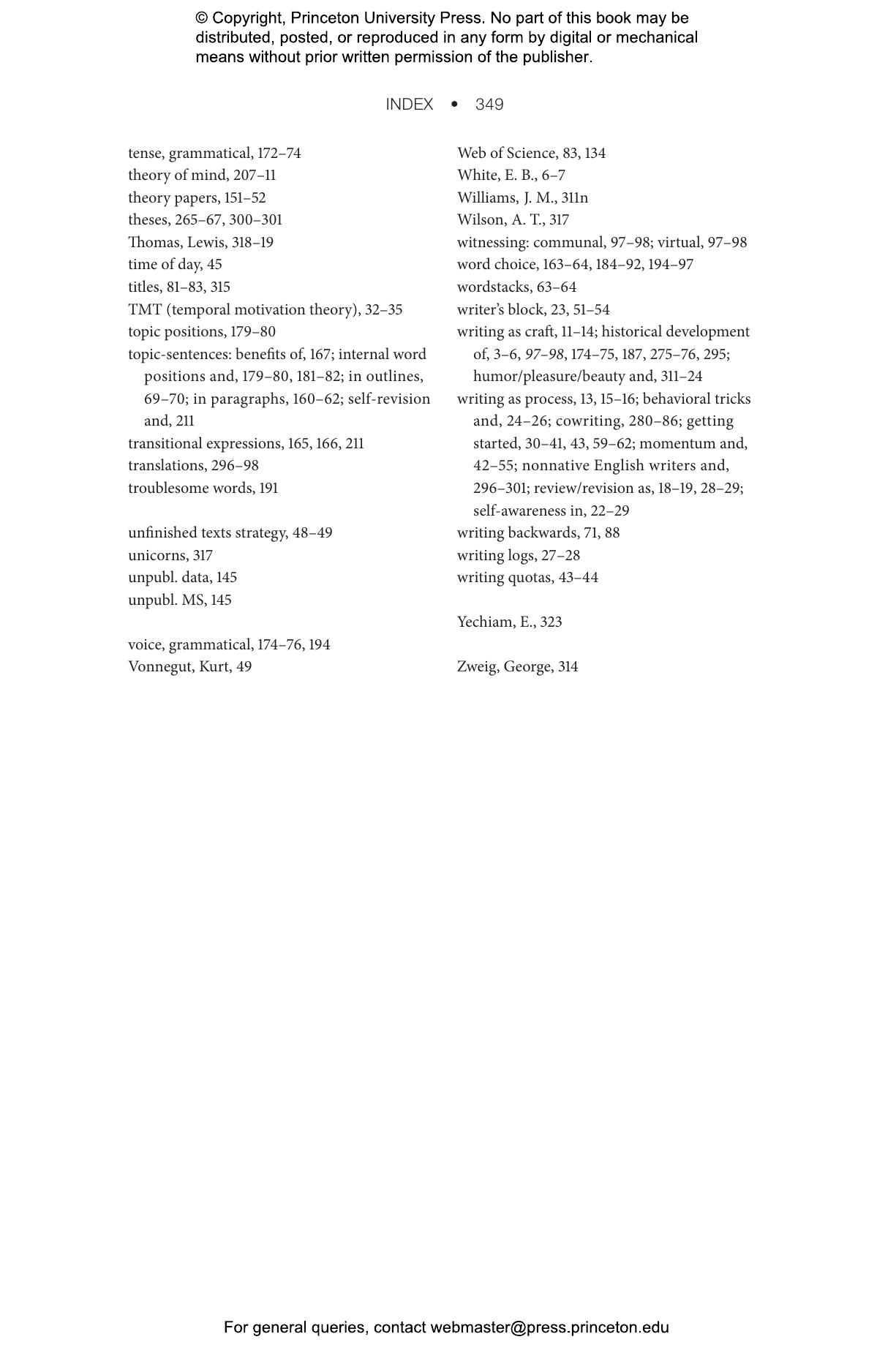The Scientist’s Guide to Writing, 2nd Edition: How to Write More Easily and Effectively throughout Your Scientific Career
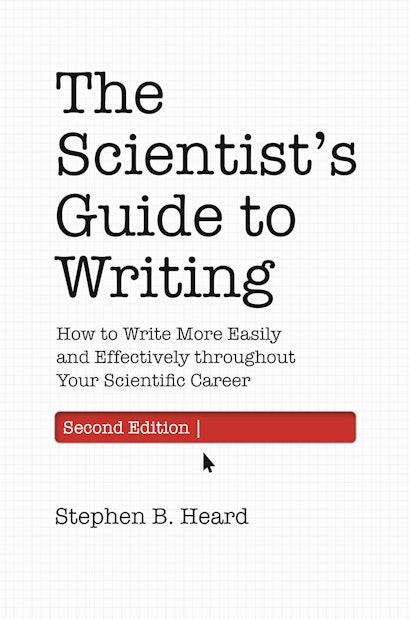

Hardcover
- Price:
- $110.00/£92.00
- ISBN:
- Published (US):
- Feb 8, 2022
- Published (UK):
- May 17, 2022
- Copyright:
- 2022
- Pages:
- 368
- Size:
- 6.13 x 9.25 in.
- 17 b/w illus.
Paperback
ebook
The Scientist’s Guide to Writing explains the essential techniques that students, postdocs, and early-career scientists need to write more clearly, efficiently, and easily. Now fully updated and expanded, this incisive primer offers practical advice on such topics as generating and maintaining writing momentum, structuring a scientific paper, revising a first draft, handling citations, responding to peer reviews, managing coauthorships, and more. The ability to write clearly is critical to any scientific career. The Scientist’s Guide to Writing shows scientists how to become better writers so that their ideas have the greatest possible impact.
- New chapters discuss effective reading, choosing the right journal for your research, and the advantages and disadvantages of posting preprints
- Provides additional advice on reporting statistical results, dealing with conflicting peer reviews, managing coauthorships, writing with English as an additional language, and more
- Emphasizes writing as a process, not just a product
- Encourages habits that improve motivation and productivity
- Offers detailed guidance on submission, review, revision, and publication
- Includes a wealth of new exercises

